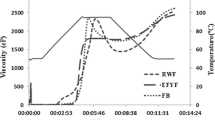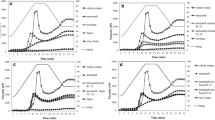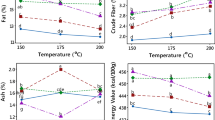Abstract
Chemical and selected functional properties of soybean flour (SF), maize flour (MF) and their blends were determined. Cookies were prepared from the SF/MF blends and evaluated for their nutrient contents, and physical and sensory properties. The SF had higher protein, fat, crude fiber and ash contents than MF. The level of these nutrients increased with increase in SF in the blends. The SF/MF blends possessed good water and oil absorption capacities, foaming capacity and foam stability in relation to MF. The emulsion activity of the blends was dependent on SF, increasing with increase in SF in the blends. The flour blends showed increase in bulk density with increased level of MF. The protein contents of the composite flour cookies increased from 10.2% in the 100% maize cookie to 28.3% for the 60% soybean substitution. The width, thickness and spread ratio did not differ significantly (< 0.05) among the composite flour cookies. However, cookie weight increased with increasing level of SF in the SF/MF cookies. Sensory evaluation showed that the cookies (SF/MF) were not significantly different (p > 0.05) in color, flavor and taste but differed significantly (p < 0.05) in texture and overall acceptability. Above 60% soybean substitution levels, the sensory scores for overall acceptability and all the sensory qualities evaluated except taste decreased steadily. Cookies prepared from the blends of 60% soybean flour and 40% maize flour were the most acceptable.
Similar content being viewed by others
References
Ihekoronye AL, Ngody PO (1985) Integrated Food Science and Technology for the Tropics. Macmillian Publishers, London.
Enwere NJ (1998) Food of plant origin – Afro-Orbis, Nsukka.
Akpapunam MA, Darbe JW(1994) Chemical Composition and Functional Properties of blends of maize and bambara groundnut flours for cookie production. Plant Foods Hum Nutr 46: 147–155.
Ene-Obong HN, Izuchukwu CC (1991) Household consumption pattern, processing and utilization of soybean (Glycine Max) in Urban Nsukka. Nig J Nutr Sci 12 (1&2): 48–52.
Sanni LO, Akinlua O (1996) Chemical, Physical, Physicochemical and sensory qualities of soy-lafun. Nig Food J 14: 30–36.
AOAC (1990) Official Method of Analysis (15 edn). Washington, DC Association of Official Analytical Chemistry.
Okaka JC, Potter NN (1977) Functional and Storage Properties of cowpea – Wheat flour blends in bread making. J Food Sci 42: 828–833.
Coffmann GW, Garcia VV (1977) Functional Properties and amino acid content of a protein isolate from winged bean flour. J Food Technol 12: 473–477.
Sathe AK, Desphande SS, Salunkhe DK (1982) functional properties of Lupin Seed protein and protein concentrates. J Food Sci 42: 491–494.
Narayana K, Narasinga Rao MS (1982) Functional properties of raw and Heat processed winged bean (Psophocarpus tetragenolobus) flour. J Food Sci 42: 534–538.
Yasumatsu K, Sawada K, Moritaka S, Misaki M, Tuda J, Wada T, Ishii K (1972) Whip-ping and emulsifying properties of Soybean products. Agric Bio chem 36: 716–727.
Sosulski FW, Garratt MA, Slinkard AE (1976) Functional properties of ten legume flours. Insti Food Sci Technol J 9: 66–69.
Nishibori S, Kawashike S (1990) Effects of dough materials on flavor formation on based cookies J Food Sci 55: 409–412.
Ordorica-Falomir C, Paredes-Lopez O (1990) Effect of safflowers protein Isolate on Cookie characteristics. Intern J Food Sci Technol 269: 39–43.
Steel RG, Torrie JH (1990) Principles and Procedures of Statistics 2nd edn. New York: McGraw Hill Book.
McWatters KH, Cherry JP (1977) Emulsification, foaming and protein solubility properties of defatted soybean, peanut, field pea and pecan flour. J Foods Sci 42: 1444–1450.
Abbey BW, Ibeh GO (1988) Functional properties of raw and heat processed cowpea (Vigna unguiculata walp) flour. J Food Sci 53: 1175–1791.
Fagbemi TN, Oshodi AA (1991) Chemical composition and functional properties of fullfat fluted pumpkin (Telfaria occidentalis) seed flour. Nig Food J 9: 27–32.
Akubor PI, Obiegbuna JE (1999) Certain chemical and functional properties of unger-minated and germinated millet flour. J Food Sci Technol 36 (30): 241–243.
Akpata MI, Akubor PI (1999) Chemical composition and selected functional properties of sweet orange (citrus sinensis) seed flour. Plant Foods Hum Nutri 54: 353–362.
Akubor PI Chukwu JK (1999) Proximate composition and selected functional properties of fermented and unfermented Africa oil bean (Pentaclethra macrophylla) seed flour. Plant Foods Hum Nutri 54: 227–238.
Kinsella JE (1976) Functional properties of protein in foods, CRC critical review Food Sci Nutri 7: 217–232.
Akubor PI, Obeta EA (1999) Chemical and Functional properties of African bread fruit (Treculia African Decne) Kernel and maize flour blends. JMGT Technol 1(1): 19–24.
Akubor PI (1997) Proximate composition and selected functional properties of African breadfruits and sweet potato flour blends. Plants Food Hum Nutr 51: 53–60.
UNECA (1985) Technical compendium on composite flours – Addis Ababa (Ethiopia): United Nations Economic Commission for Africa.
Claughton SM, Pearce RJ (1989) Protein enrichment of sugar-snop cookies with sunflower protein Isolate. J Food Sci 54: 354–356.
Fuhr FR (1962) Cookie Spread, Its effects on production and quality. Bakers Digest 36(4): 56–60.
Author information
Authors and Affiliations
Rights and permissions
About this article
Cite this article
Akubor, P., Onimawo, I. Functional properties and performance of soybean and maize flour blends in cookies. Plant Foods Hum Nutr 58, 1–12 (2003). https://doi.org/10.1023/B:QUAL.0000040342.75650.5c
Issue Date:
DOI: https://doi.org/10.1023/B:QUAL.0000040342.75650.5c




